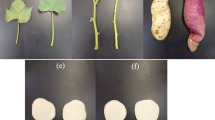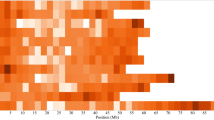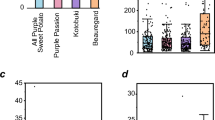Abstract
Pickersgill and Bunting say1 that the natural dispersal of the sweet potato is severely limited, for many varieties seldom flower and set seed even more rarely. Although this may be true for the United States2 and Japan3, sweet potatoes are recorded to set seed abundantly in St Vincent4 and only one in 100 clones failed to flower in Java5.
This is a preview of subscription content, access via your institution
Access options
Subscribe to this journal
Receive 51 print issues and online access
$199.00 per year
only $3.90 per issue
Buy this article
- Purchase on SpringerLink
- Instant access to full article PDF
Prices may be subject to local taxes which are calculated during checkout
Similar content being viewed by others
References
Pickersgill, B., and Bunting, A. H., Nature, 222, 225 (1969).
Miller, J. C., J. Hered., 28, 347 (1937).
Cuthbertson, R. E., and Boulware, J. H., GHQ Supreme Command for Allied Powers (Japan) Natural Resources Section Rep. No. 145 (1951).
Rep. Dep. Agric. St Vincent, 9 (1919).
Van Schreven, A. C., Pember. Balai Besar Penjel. Pertan. Bogor. No. 139, 44 (1954).
Gooding, H. J., Emp. J. Exp. Agric., XXXII, No. 128, 279 (1964).
Author information
Authors and Affiliations
Rights and permissions
About this article
Cite this article
GOODING, H. Cultivated Plants and the Kon-Tiki Theory. Nature 223, 185 (1969). https://doi.org/10.1038/223185a0
Received:
Issue date:
DOI: https://doi.org/10.1038/223185a0
This article is cited by
-
Literatur über archäologische Kulturpflanzenreste (1969)
Die Kulturpflanze (1972)



